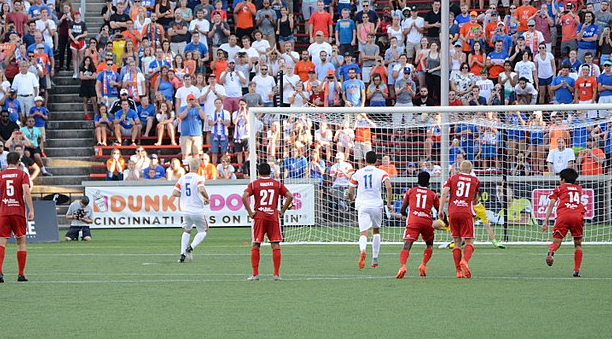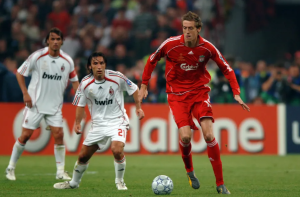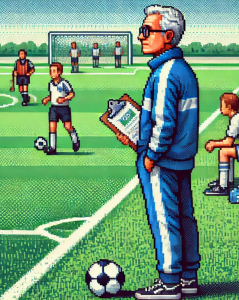
Mastering Penalty Kicks: Insights to Boost Your Game
Penalty kicks can define a match—just ask any player who’s had to face the pressure of that 12-yard shot. With nearly 78% of penalty kicks finding the net in professional leagues, they might seem like a guaranteed goal, but the science says otherwise. Recent research (will download a .pdf) examining over 7,000 penalty kicks across five European leagues uncovers how subtle situational factors influence success rates. These findings can transform how players train, how coaches strategize, and how clubs support their athletes during high-pressure moments.
What the Study Revealed
A comprehensive study analyzed 14 seasons of data from leagues like the English Premier League and Serie A. Researchers examined nine key situational factors affecting penalty kick outcomes, splitting them into pre-game (e.g., location, attendance, league prestige) and in-game (e.g., scoreline, match phase).
Here are the standout findings:
- League Prestige: Players in less prestigious leagues (like the Eredivisie) scored more often, likely because lower stakes reduced performance pressure.
- Scoreline Impact: Kicks taken by teams leading in the second half were more successful, possibly due to reduced decisiveness of the moment.
- Previous Success: Observing a successful penalty kick from an opposing player boosted the kicker’s chances.
- Unexpected Trend: Players who had scored a field goal earlier in the match were slightly less likely to convert their penalties.
These findings point to how external pressures and psychological factors subtly shape outcomes.
Turning Science Into Strategy
So, how can this research be applied on the pitch? Whether you’re a coach or a player, here are actionable strategies drawn from the study:
For Coaches:
- Choose Your Taker Wisely:
Select players with a track record of handling pressure, especially those designated as regular penalty takers. The study found that consistent kickers convert more successfully. - Leverage the Scoreline:
In a match where your team leads, emphasize calm decision-making over high-risk maneuvers. Encourage kickers to take advantage of the reduced pressure in these moments. - Incorporate Situational Drills:
Simulate high-pressure scenarios in training, such as penalties taken in the last minutes of a scrimmage, to mimic match conditions.
For Players:
- Focus on the Process, Not the Outcome:
The study supports the idea that concentrating on routine—like your approach and strike—can mitigate the impact of situational constraints. - Boost Confidence Through Visualization:
Practice mental imagery of successful penalty kicks. Observing teammates or videos of top players converting penalties can enhance self-efficacy, an essential ingredient for peak performance. - Manage Ego Threats:
Scoring earlier in the match can create subconscious pressure to perform perfectly. Remind yourself to stay grounded and approach the penalty as just another kick.
For Clubs:
- Cultivate Psychological Support:
Regular mental training should be a pillar of player development. Building resilience can make the difference between cracking under pressure and delivering under the spotlight. - Use Data-Driven Decisions:
Rely on analytics to identify trends in your team’s penalty kick performance. Are certain players more reliable in specific conditions?
Why This Matters in Today’s Soccer World
Penalty kicks aren’t just about physical skill; they’re a mental duel. This research reveals how external pressures, whether from a roaring crowd or a high-stakes match, can influence outcomes. By addressing these situational factors head-on, coaches and players can improve conversion rates and turn penalty situations into decisive advantages.
In youth leagues, where development matters more than trophies, fostering confidence during penalties can shape young players into resilient athletes. At the professional level, these insights can help clubs optimize their strategies in clutch moments.
Your Turn to Kick It Off
How do you approach penalty kick preparation in your team? Have you noticed any specific patterns in who performs best under pressure? Share your thoughts and strategies in the comments or on social media.
Questions to Reflect On:
- What routines or drills have worked best for you or your players in handling penalty situations?
- How can clubs better prepare players for the psychological aspects of penalty kicks?
- Have you ever noticed an unexpected factor—like prior success or audience size—affecting performance?
Are you ready to delve deeper into the science and strategy of soccer?
This Week in Soccer offers you a unique blend of expert analysis, engaging infographics, and practical insights. Subscribe to our newsletter and stay ahead of the game with the latest in soccer analytics and coaching strategies. Make the move from spectator to strategist. Subscribe now!


